By Steven "Steve" Rabitsch
In his essay collection On Nature (2003), Edward Hoagland makes a seemingly simple yet profound observation that the astute traveller frequently encounters as a proverb in the western states, particularly in Texas. In response to the question as to why the hats Texans wear are so big, Hoagland notes that “[p]eople started wearing big hats not simply because the brims were shady […] but to help break up the landscape.” (98) As so often is the case, that which appears as simple yields a wealth of complexities; and, western hats—the chief object of my postdoctoral work in American studies—are no exception in this respect.
Fulbright Austria was instrumental in the formation of American studies in Austria and has been an integral part of the discipline ever since. As an American-studies scholar, I consider it vital to immerse oneself in American culture, interacting with American people on their home turf and engaging with American objects, customs, and values. While there might be other “schools of thought,” first-hand experience with American culture is key if one wants to teach, research, and write about the mosaic that is the United States with any degree of confidence and legitimacy. This is particularly true if you study the cultural history of a material object that at once is deeply rooted in local and regional contexts and yet instantly recognized as a symbol of and for America the world over. In order to understand western hats, one has to think, act, and work “glocally.” Consequently, receiving a Fulbright grant to do just that at the Center for the Study of the American West at West Texas A&M University in Canyon, Texas, can only ever be among the best experiences in my academic life.
Since riding the trail all by yourself is generally considered a bad idea, I was joined on my hatological expedition to the westward by a little ursine travel companion—“cowbear” Billy Fulbright. I couldn’t have wished for a better sidekick (though he keeps telling people on Instagram that our roles are actually reversed).
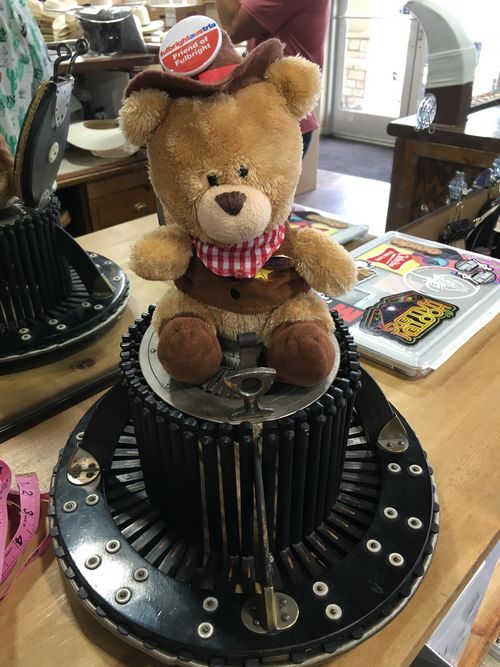 Billy Fulbright at Greeley Hat Works (credits Stefan Rabitsch)
Billy Fulbright at Greeley Hat Works (credits Stefan Rabitsch) Billy Fulbright at Hatco (credits Stefan Rabitsch)
Billy Fulbright at Hatco (credits Stefan Rabitsch)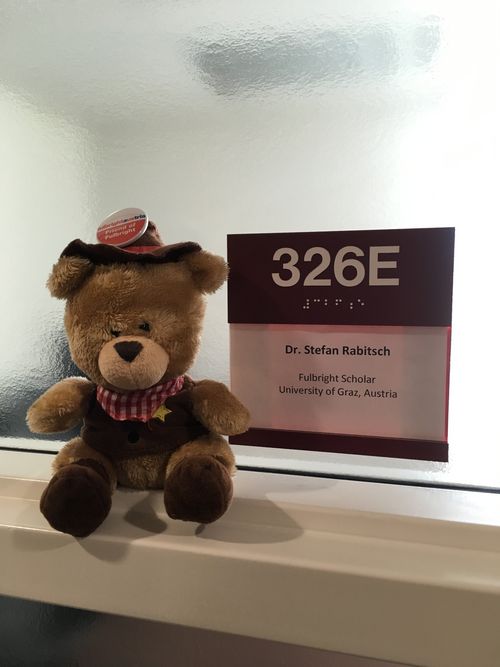 Billy Fulbright's office at WTAMU (credits Stefan Rabitsch)
Billy Fulbright's office at WTAMU (credits Stefan Rabitsch)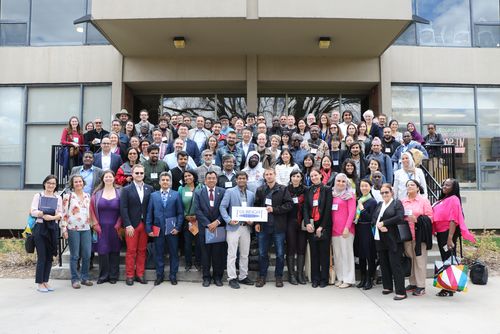 Fulbright Enrichment Seminar, Global Minnesota (credit Wen-Huei Chang)
Fulbright Enrichment Seminar, Global Minnesota (credit Wen-Huei Chang)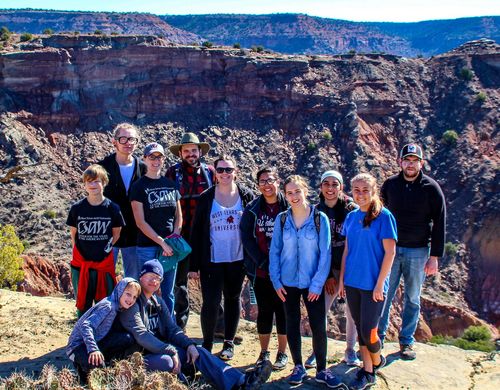 CSAW CCC Student-guided hike in Palo Duro Canyon (credit Eddie Tubbs, Texas Parks and Wildlife)
CSAW CCC Student-guided hike in Palo Duro Canyon (credit Eddie Tubbs, Texas Parks and Wildlife)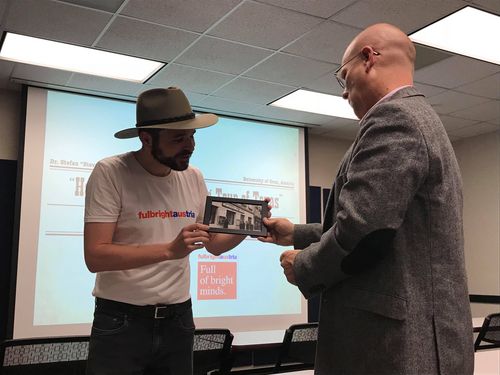 Fulbright Week Talk (credit AJ McCormick, CSAW)
Fulbright Week Talk (credit AJ McCormick, CSAW)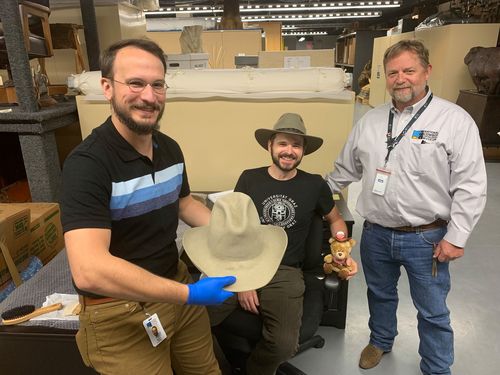 Nat. Cowboy Museum (credit Seth Spillman, Nat. Cowboy Museum)
Nat. Cowboy Museum (credit Seth Spillman, Nat. Cowboy Museum)